Author's Article Summary/Press release
- Press Release (31 August 2022) : Kusunoki and Ueno, 2022
- Press Release (22 July 2022) : Sato et al., 2022
- Author's Article Summary (6 Dec. 2021) : Ito, K., 2022
- Author's Article Summary (18 Apr. 2021) : Yamashita et al., 2021
- Author's Article Summary (19 Feb. 2021) : Oizumi et al., 2020
- Author's Article Summary (23 Sep. 2020) : Yamaji et al., 2020
- Press Release (25 Aug. 2020) : Yamaguchi and Maeda, 2020
- Press Release (13 Mar. 2019) : Watanabe et al., 2019
Press Release (31 August 2022) The press release document from Tukuba University. (in Japanese)
- Kusunoki K. and K. Ueno, 2022: Development of a nocturnal temperature inversion in a small basin associated with leaf area ratio changes on the mountain slopes in central Japan. J. Meteor. Soc. Japan, 100. https://doi.org/10.2151/jmsj.2022-047
Graphical Abstract

According to a three-year leaf area index observation in the mixed forest of the Sugadaira Highland (1320 m a.s.l.), Nagano Prefecture, Japan, we identified weakening of the nocturnal temperature inversion (NTI) associated with leaf expansion and strengthening after leaf fall in a small basin. Heat-budget assessment for the cold-air pool development indicated that an increase in storage heat flux of forests with leaf expansion could cancel nocturnal radiative cooling and weaken gravity currents at the forest floor.
Press Release (22 July 2022) The press release document from Kitami Institute of Technology. (in Japanese)
- Sato K., T. Kameda, T. Shirakawa, 2022: Heavy snowfall at Iwamizawa influenced by the Tsushima Warm Current. J. Meteor. Soc. Japan, 98, 775-786.
https://doi.org/10.2151/jmsj.2022-045
Graphical Abstract
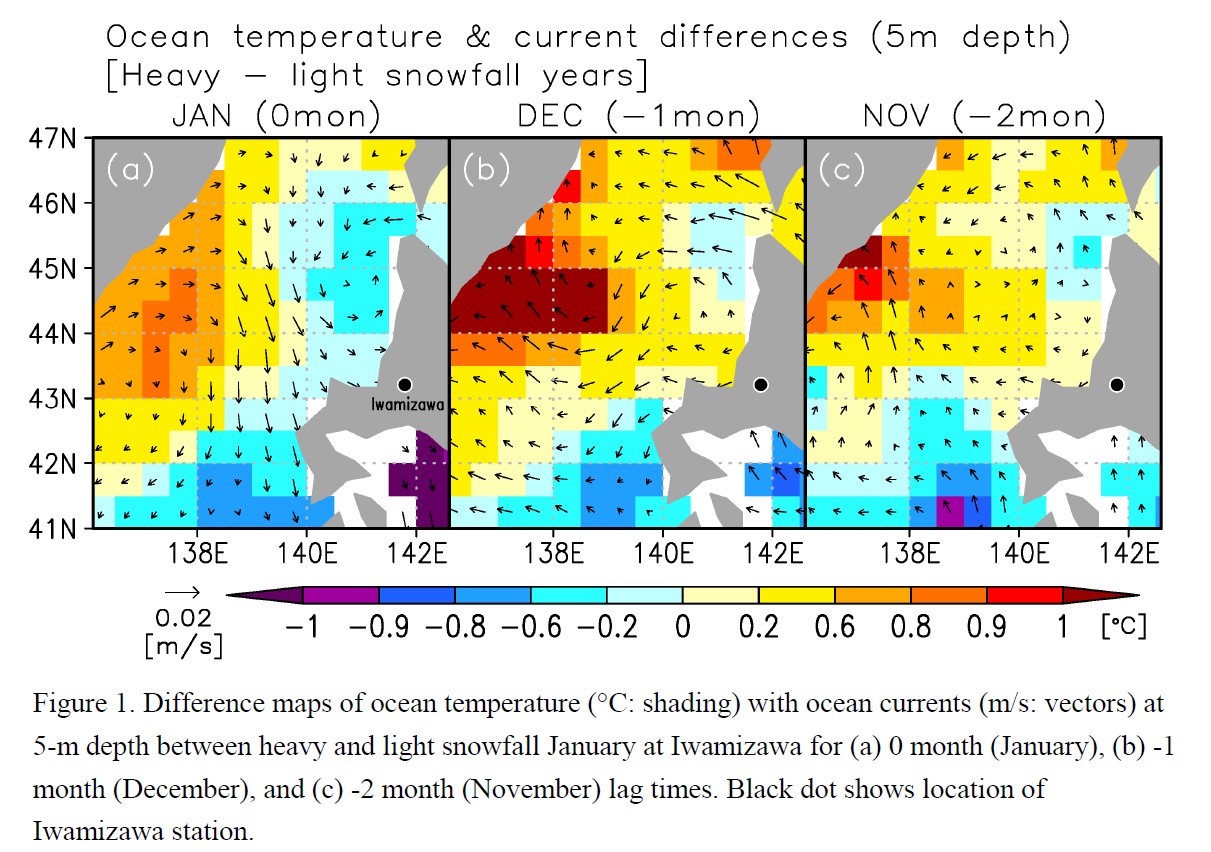
This study investigated whether tropical cyclones (TCs) approaching Tokyo have changed in terms of number and environmental conditions using observational and reanalysis data during the geostationary satellite era (1980-2019). The number of TCs approaching the southern coast of Japan, including Tokyo, has increased over the last 40 years. The environmental conditions for TC development have become more favorable, with warmer sea surface temperature, less vertical wind shear, and more moisture in the atmosphere. In addition, the translation speed of TCs has decreased, which indicates a longer influence time.
Author's Article Summary (6 Dec. 2021) The document at NOTE Homepage (in Japanese)
- Ito, K., 2022: Bias in near-real-time global sea surface temperature analysis of Japan Meteorological Agency associated with tropical cyclone passages in western North Pacific. J. Meteor. Soc. Japan, 100,
https://doi.org/10.2151/jmsj.2022-016.
Graphical Abstract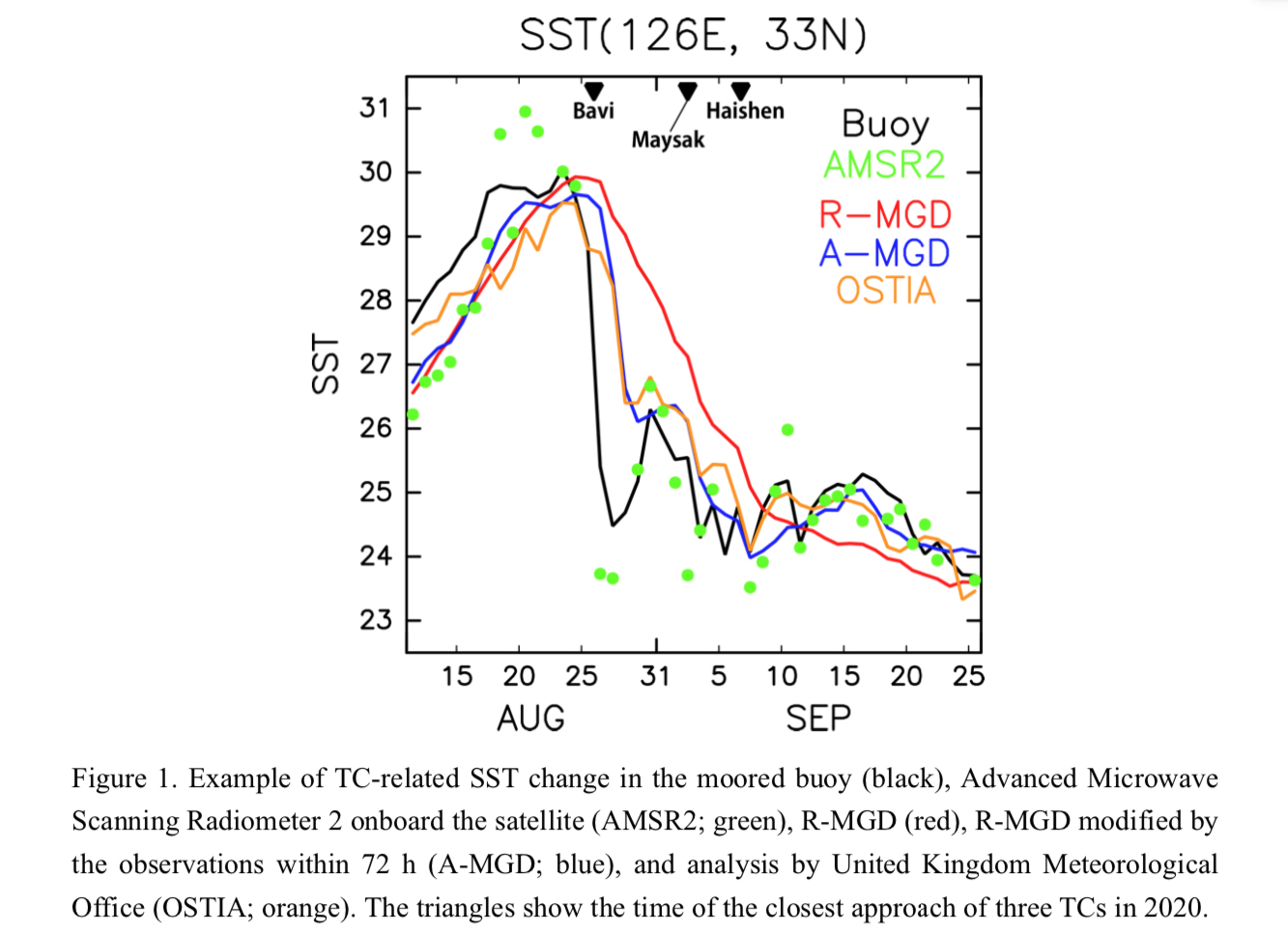
The near-real-time merged satellite and in-situ data global sea surface temperature (SST) of the Japan Meteorological Agency (hereafter, R-MGD) is subjected to the exceeding filtering of short-time-scale fluctuations. Therefore, the rapid SST change due to the passage of tropical cyclones (TCs) causes biases. The issue can be alleviated by putting more weight on the observations within 72 h.
Author's Article Summary (18 Apr. 2021) The document at NIES Homepage (in Japanese)
- Yamashita, Y., M. Takigawa, D. Goto, H. Yashiro, M. Satoh, Y. Kanaya, F. Taketani, and T. Miyakawa, 2021: Effect of model resolution on black Carbon transport from Siberia to the Arctic associated with the well-developed low-pressure systems in September. J. Meteor. Soc. Japan, 99, 287-308.
https://doi.org/10.2151/jmsj.2021-014
Graphical Abstract
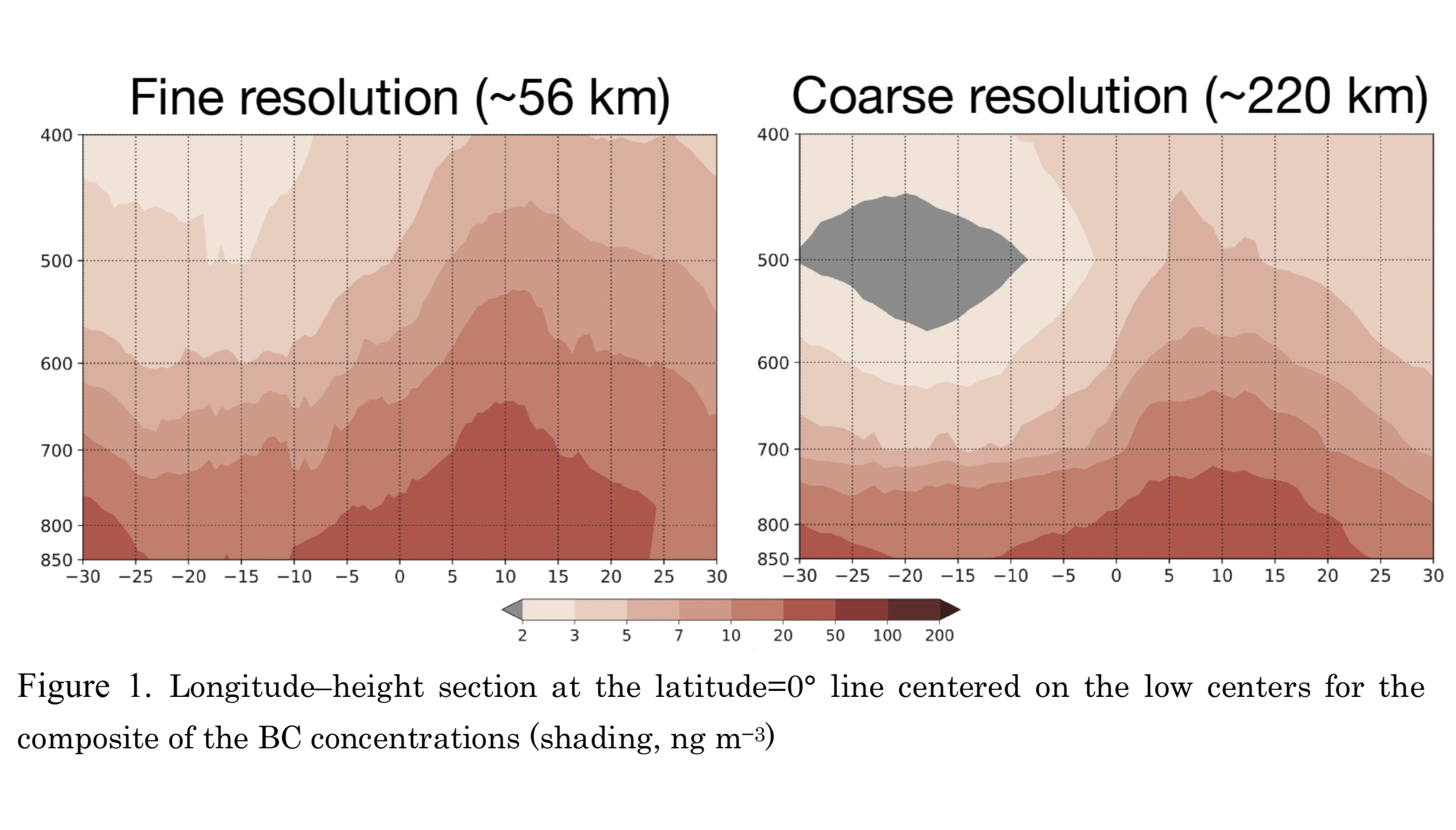
Atmospheric transport of black carbon (BC) affects the absorption/scattering of solar radiation, precipitation, and snow/ice cover, especially in areas of low human activity such as the Arctic. The resolution dependency of simulated BC transport from Siberia to the Arctic, related to the well-developed low-pressure systems in September, was evaluated using the Nonhydrostatic Icosahedral Atmospheric Model–Spectral Radiation Transport Model for Aerosol Species (NICAM-SPRINTARS) with fine (∼ 56 km) and coarse (∼ 220 km) horizontal resolutions.
Author's Article Summary (19 Feb. 2021) The document at The University of Tokyo/AORI Homepage (in Japanese)
- Oizumi, T., K. Saito, L. Duc, and J. Ito, 2020: Ultra-high resolution numerical weather prediction with a large domain using the K computer. Part 2: The case of the Hiroshima heavy rainfall event on August 2014 and dependency of simulated convective cells on model resolutions. J. Meteor. Soc. Japan, 98, 1163-1182.
https://doi.org/10.2151/jmsj.2020-060
Graphical Abstract
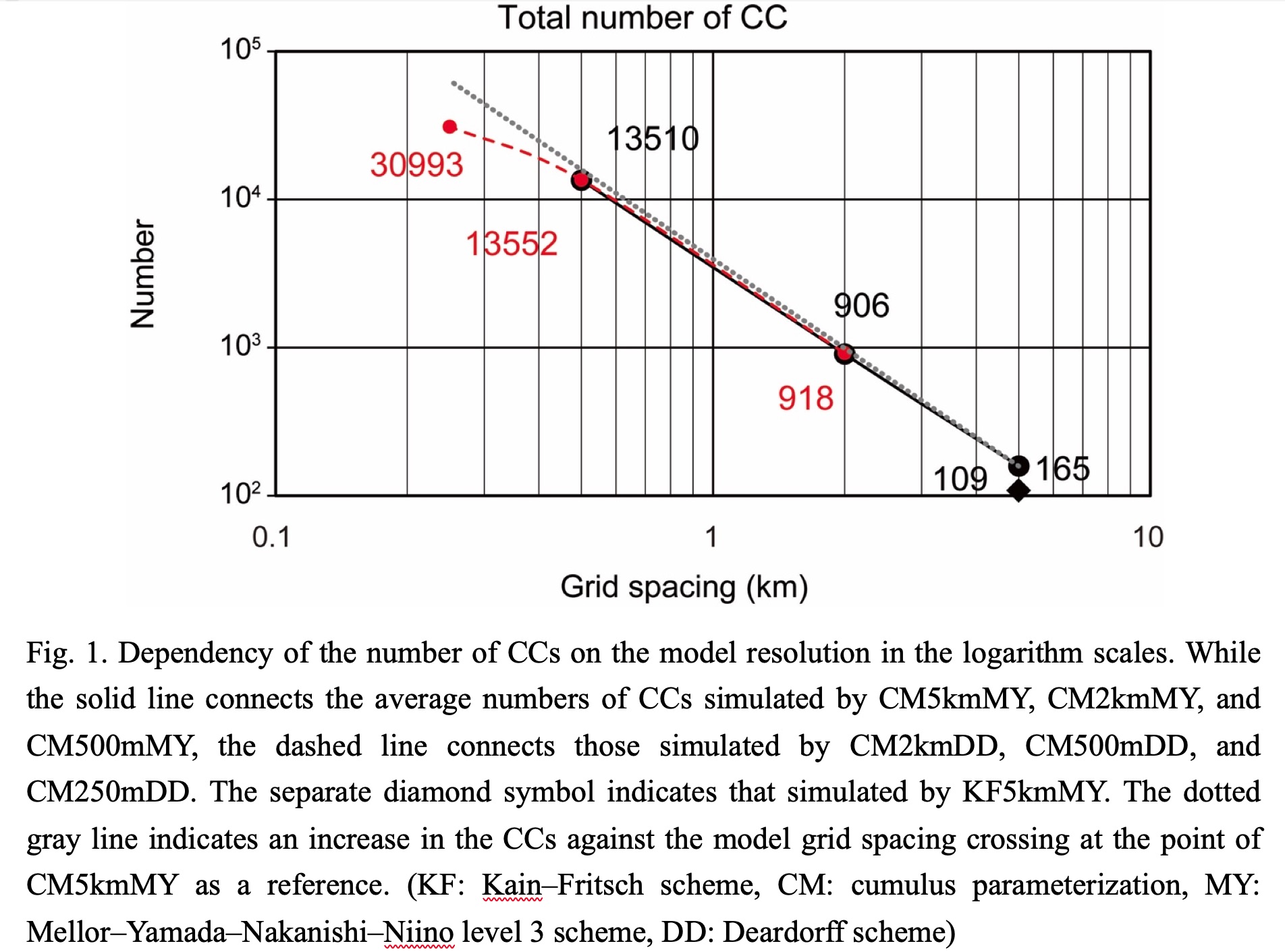
This study conducts the Ultra-high-resolution (5-km to 250-m grid spacing) numerical weather prediction (NWP) experiments and investigates the impacts of model resolutions on the Hiroshima heavy rain event in August 2014. The results show that the finer resolution model well reproduces the torrential rain event and the simulated convective cores (CCs) tend to converge when the resolution goes beyond 500 m.
Author's Article Summary (23 Sep. 2020) The document at JAXA/EORC Homepage (in Japanese)
- Yamaji, M., H. G. Takahashi, T. Kubota, R. Oki, A. Hamada, and Y. N. Takayabu, 2020: 4-year climatology of global drop size distribution and its seasonal variability observed by spaceborne Dual-frequency Precipitation Radar. J. Meteor. Soc. Japan, 98, 755-773.
https://doi.org/10.2151/jmsj.2020-038
Graphical Abstract
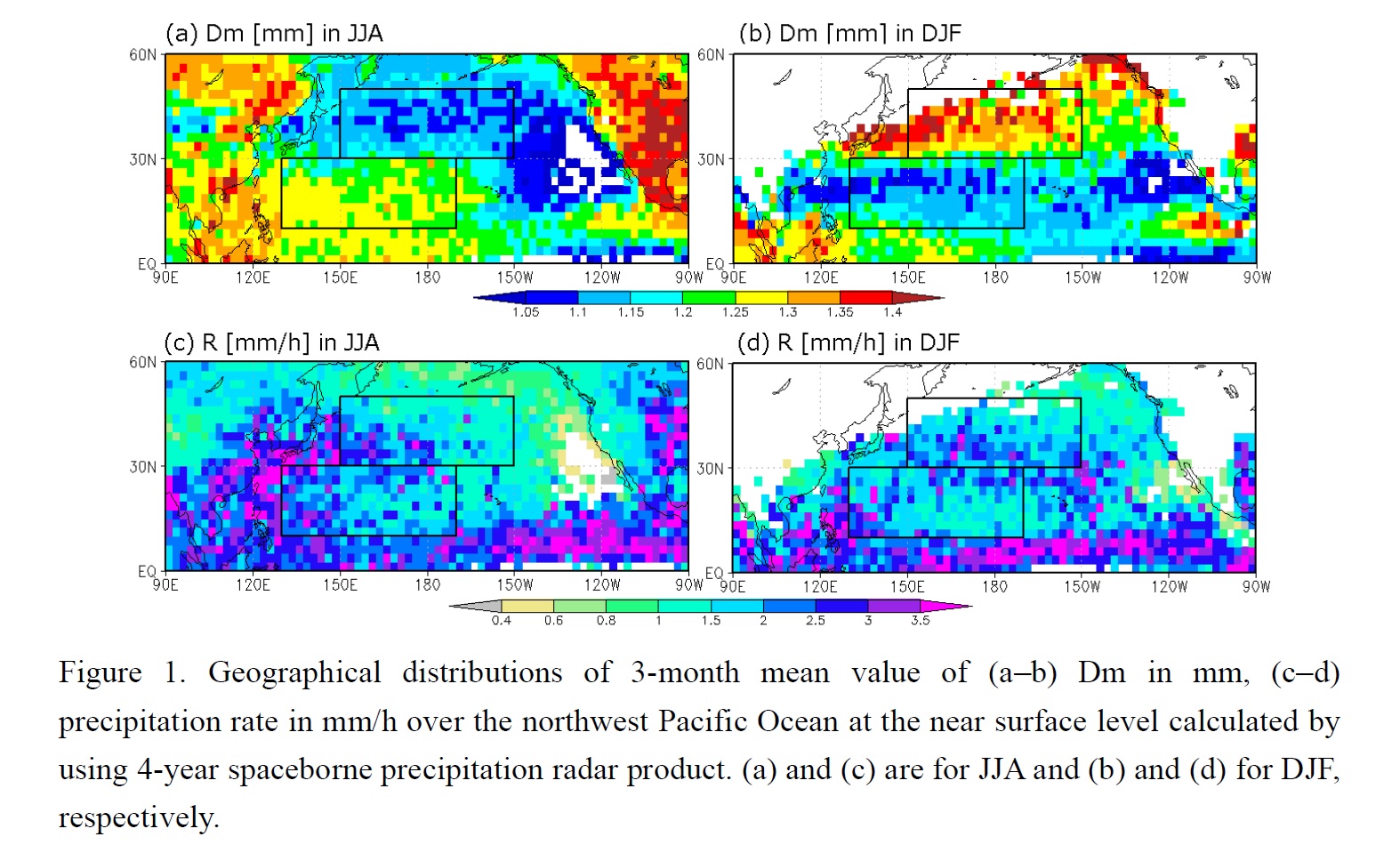
Plain Language Summary: Global-scale spatial distributions of rainfall drop size (mean diameter; Dm) are newly obtained by using 4-year accumulated products from the spaceborne precipitation radar. Relationship between Dm and precipitation rate is not a simple one-to-one relationship. Focusing on the seasonal variation in Dm over the northwest Pacific Ocean, the results indicate that the variation in Dm is related to the seasonal change of the dominant precipitation systems.
Press Release (25 Aug. 2020) The press release document from MRI/JMA (in Japanese)
- Yamaguchi, M., and S. Maeda, 2020: Increase in the number of tropical cyclones approaching Tokyo since 1980. J. Meteor. Soc. Japan, 98, 775-786.
https://doi.org/10.2151/jmsj.2020-039
Graphical Abstract
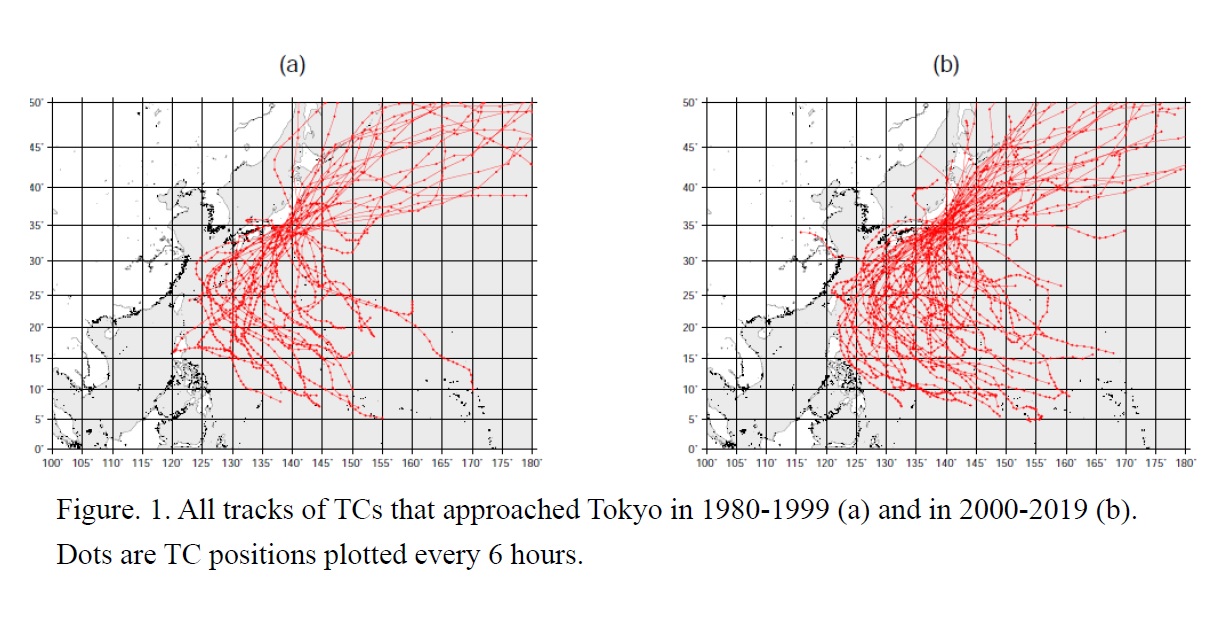
This study investigated whether tropical cyclones (TCs) approaching Tokyo have changed in terms of number and environmental conditions using observational and reanalysis data during the geostationary satellite era (1980-2019). The number of TCs approaching the southern coast of Japan, including Tokyo, has increased over the last 40 years. The environmental conditions for TC development have become more favorable, with warmer sea surface temperature, less vertical wind shear, and more moisture in the atmosphere. In addition, the translation speed of TCs has decreased, which indicates a longer influence time.
Press Release (13 Mar. 2019)
- Watanabe, S., M. Fujita, S. Kawazoe, S. Sugimoto, Y. Okada, R. Mizuta, and M. Ishii, 2019: Frequency change of clear-air turbulence over the North Pacific under 2 K global warming - Ensemble projections using a 60-km atmospheric general circulation model. J. Meteor. Soc. Japan, 97, 757-771.
https://doi.org/10.2151/jmsj.2019-038
Graphical Abstract
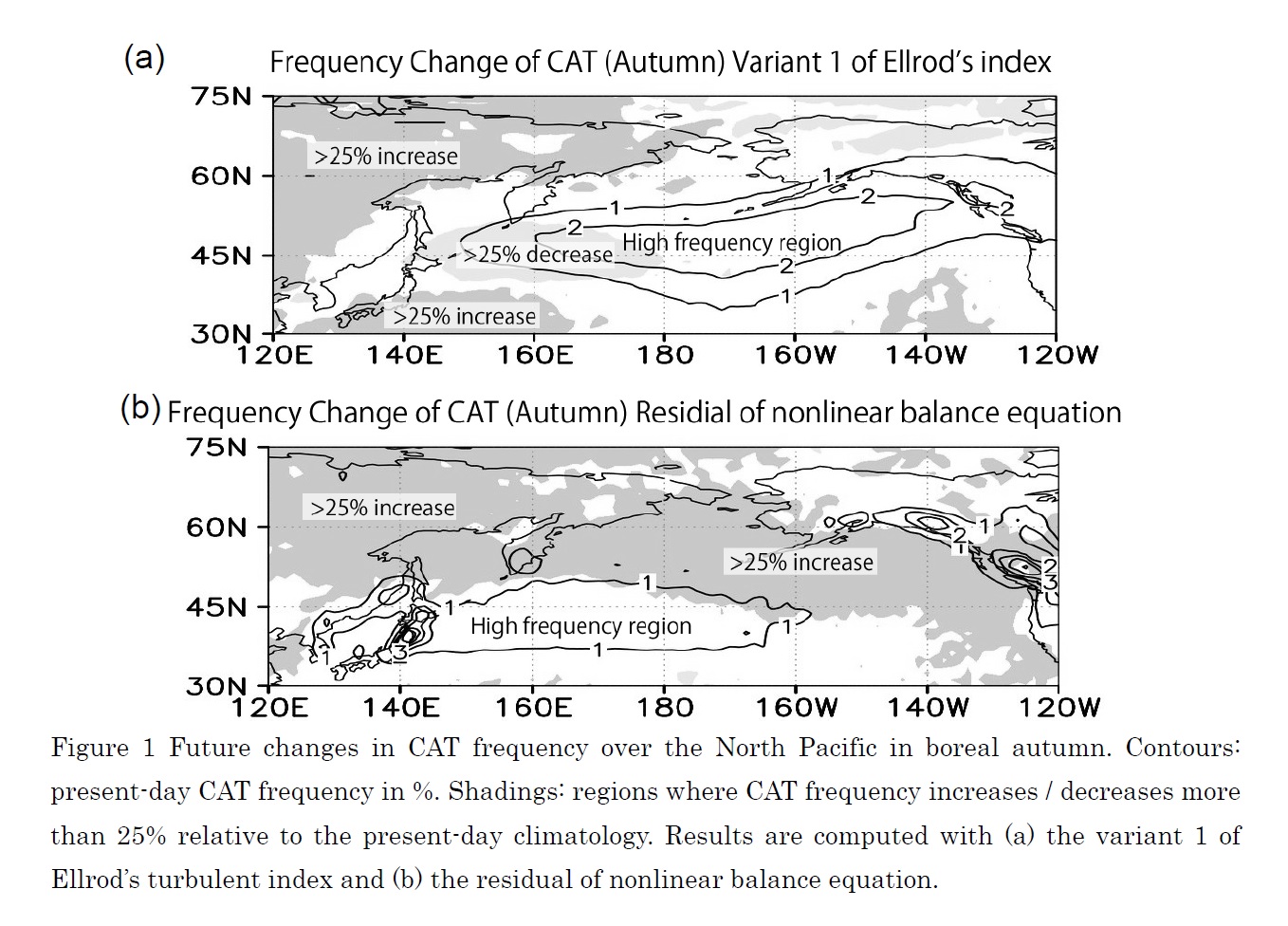
Global warming may influence geographical distributions of clear-air turbulence (CAT) hazardous for aircrafts. This study addresses frequency change of CAT over the North Pacific under 2 K global warming based on the database for Policy Decision making for Future climate change (d4PDF; http://www.miroc-gcm.jp/~pub/d4PDF/index_en.html). The CAT broadly decreases in the midlatitude central to western North Pacific along with the south side of its present-day high-frequency band extending from Japan to the eastern North Pacific. Meanwhile, large relative increases are found outside the band, implying an increased risk of CAT encounters. These changes depend on season, CAT indices, and uncertainties in future warming patterns of sea surface temperature projected by climate models. [click here for the press release from JAMSTEC (in Japanese)]







